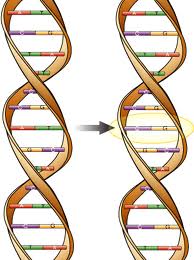Allele frequency is the proportion of all copies of a gene that is made up of a particular gene variant.
antibacteria is a compound or substance that kills or slows down the growth of bacteria.
Balancing selection refers to a number of selective processes by which multiple alleles are actively maintained in the gene pool of a populationat frequencies above that of gene mutation.
Biogeography is the study of the distribution of species (biology) spatially (geography) and temporally (history).
bottleneck is a phenomenon where the performance or capacity of an entire system is limited by a single or limited number of components or resources.
Catastrophism is the idea that Earth has been affected in the past by sudden, short-lived, violent events, possibly worldwide in scope.
directional selection is a mode of natural selection in which a single phenotype is favored, causing theallele frequency to continuously shift in one direction.
Disruptive selection, also called diversifying selection, describes changes in population genetics in which extreme values for a trait are favored over intermediate values.
Evolution is the change over time in one or more inherited traits found inpopulations of organisms.
Fitness (biology), an individual's ability to propagate its genes
Fixation, the state when every individual in a population has the same allele at a particular locus
Fossils are the preserved remains or traces of animals (also known as zoolites), plants, and other organisms from the remote past.
founder effect is the loss of genetic variation that occurs when a new population is established by a very small number of individuals from a larger population.
gene flow is the transfer of alleles of genes from one population to another.
gene pool is the complete set of unique alleles in a species or population.
Genetic drift or allelic drift is the change in the frequency of a gene variant (allele) in a population due to random sampling.
genetic equilibrium is at hand for an allele in a gene pool when the frequency of that allele is not changing.
Hardy-Weinberg principle states that the frequencies of alleles in a sufficiently large population will remain constant if the only forces acting on that population are the random reshuffling of alleles during the formation of the sperm or egg, and random combination of the alleles in these sex cells during fertilization.
Inbreeding is the reproduction from the mating of two genetically related parents, which can increase the chances of offspring being affected by recessive or deleterious traits.
lethal mutations are mutations that lead to the death of the organisms which carry the mutations.
Microevolution is a change in gene frequency within a population over time.
mutation rate is the chance of a mutation occurring in an organism or gene in each generation.
Natural selection is the process by which biologic traits become more or less common in a population due to consistent effects upon the survival or reproduction of their bearers. It is a key mechanism of evolution.
neutral mutation has no harmful or beneficial effect on the organism. Such mutations occur at a steady rate, forming the basis for the molecular clock
Polymorphism in biology occurs when two or more clearly different phenotypes exist in the same population of a species — in other words, the occurrence of more than one form or morph.
population is all the organisms that both belong to the same species and live in the same geographical area.
sampling error or estimation error is the error caused by observing a sample instead of the whole population.
Sexual selection is the theory proposed by Charles Darwin that states that certain evolutionary traits can be explained byintraspecific competition.
Stabilizing or ambidirectional selection is a type of natural selection in which genetic diversity decreases as the population stabilizes on a particular trait value.
uniformitarianism assumption is that the same natural laws and processes that operate in the universe now, have always operated in the universe in the past and apply everywhere in the universe.
































No hay comentarios:
Publicar un comentario